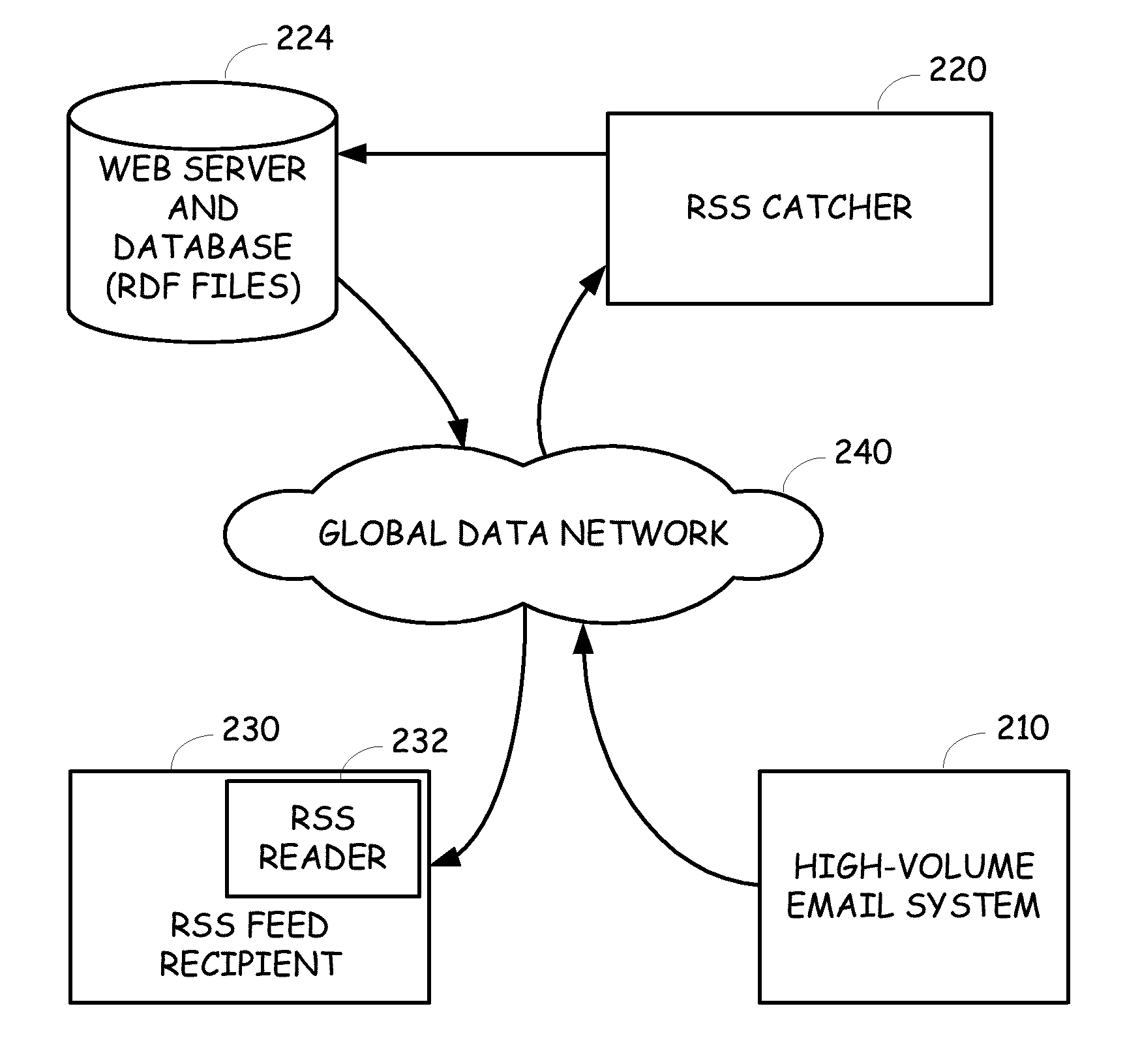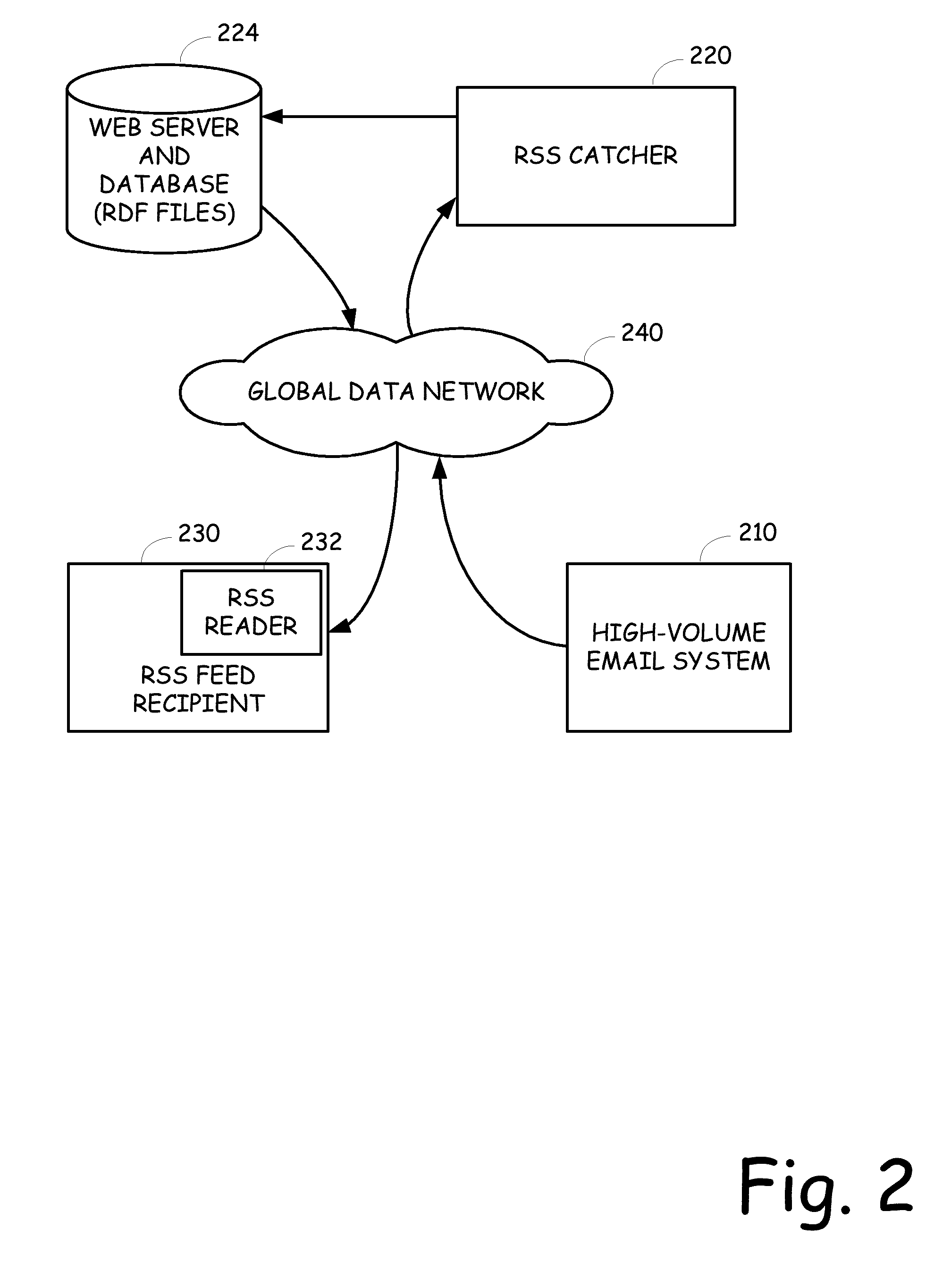General purpose RSS catcher
a general purpose, catcher technology, applied in the field of internet communication, can solve the problems of unfavorable spamming, unsatisfactory spamming, and inability to fully understand or appreciate the reasoning behind the application of the name to the hordes of unwanted emails, and achieve the effect of facilitating the sending of emails
- Summary
- Abstract
- Description
- Claims
- Application Information
AI Technical Summary
Benefits of technology
Problems solved by technology
Method used
Image
Examples
Embodiment Construction
[0030] The present invention is directed towards the delivery of electronic information to users in a manner that is immune to the delivery of SPAM and phishing. More specifically, the present invention is directed towards an RSS catcher that is operable to convert high-volume and broadcasted data into RSS feeds and to provide user directed inquiries and requests from Internet service providers in a manner that assures the sender is authentic.
[0031] Now turning to the drawings in which like labels and numbers refer to like elements throughout the several views, various embodiments and aspects of the present invention are described more fully.
[0032]FIG. 1 is a system diagram illustrating the environment for a typical high-volume email distribution and management system. A high-volume email server 110 is communicatively assessable to one or more marketing company systems 120A-C and one or more targets or recipients 130A-C. In general, the marketing companies employ the high-volume e...
PUM
 Login to View More
Login to View More Abstract
Description
Claims
Application Information
 Login to View More
Login to View More - R&D
- Intellectual Property
- Life Sciences
- Materials
- Tech Scout
- Unparalleled Data Quality
- Higher Quality Content
- 60% Fewer Hallucinations
Browse by: Latest US Patents, China's latest patents, Technical Efficacy Thesaurus, Application Domain, Technology Topic, Popular Technical Reports.
© 2025 PatSnap. All rights reserved.Legal|Privacy policy|Modern Slavery Act Transparency Statement|Sitemap|About US| Contact US: help@patsnap.com



